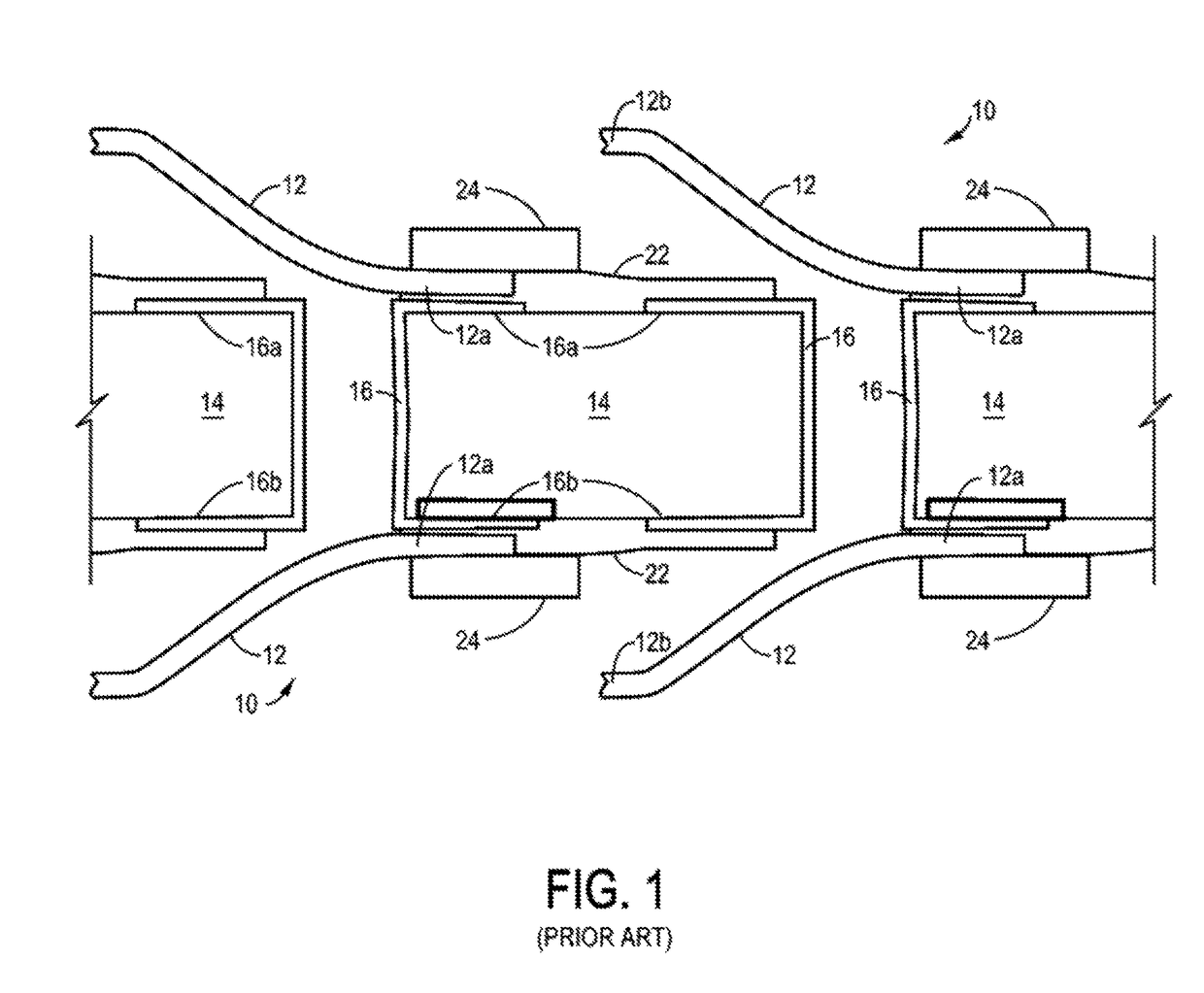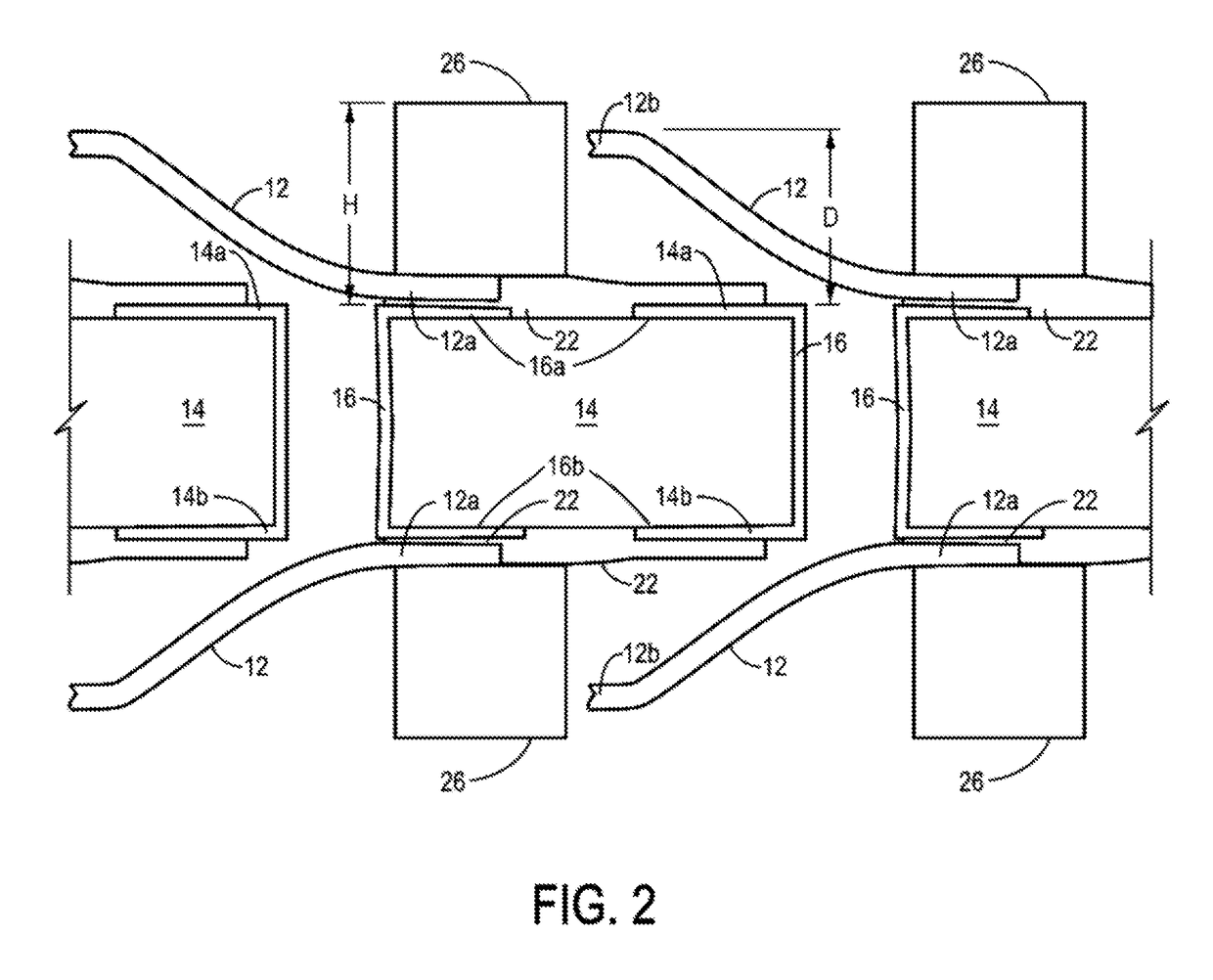Electrical connector with electrical contacts protected by a layer of compressible material and method of making it
a compression material and electrical connector technology, applied in the direction of dielectric characteristics, electrical connection formation of printed elements, coupling device connections, etc., can solve the problems of adding to the thickness of the connector, not being as effective protected from damage, and damage to the electrical contacts
- Summary
- Abstract
- Description
- Claims
- Application Information
AI Technical Summary
Benefits of technology
Problems solved by technology
Method used
Image
Examples
Embodiment Construction
[0035]FIG. 1 shows, in a cross-sectional or cutaway view, an electrical connector (which may be an interposer, as in the example depicted in this view) 10 of the prior art with a plurality of electrical contacts 12 arranged in an array of electrical contacts (only part of which array is depicted in this view). The electrical connector 10 includes a non-conductive or insulating substrate 14 with conductive vias 16 extending therethrough from an upper surface 18 of the substrate 14 to a lower surface 20 of the substrate 14. (Of course, “upper” and “lower” surfaces refer to the orientation of the connector 10 as shown in the present illustration of FIG. 1; the electrical connector 10 and the electrical contacts 12 can generally be mounted in any orientation as desired, including vertical mountings, if the application requires it, and electrical contacts and electrical connectors originally mounted in one orientation might be moved to a different orientation, if desired.) One such elect...
PUM
| Property | Measurement | Unit |
|---|---|---|
| compressive modulus | aaaaa | aaaaa |
| compressive modulus | aaaaa | aaaaa |
| thickness | aaaaa | aaaaa |
Abstract
Description
Claims
Application Information
 Login to View More
Login to View More - R&D
- Intellectual Property
- Life Sciences
- Materials
- Tech Scout
- Unparalleled Data Quality
- Higher Quality Content
- 60% Fewer Hallucinations
Browse by: Latest US Patents, China's latest patents, Technical Efficacy Thesaurus, Application Domain, Technology Topic, Popular Technical Reports.
© 2025 PatSnap. All rights reserved.Legal|Privacy policy|Modern Slavery Act Transparency Statement|Sitemap|About US| Contact US: help@patsnap.com



